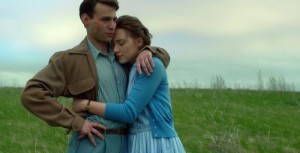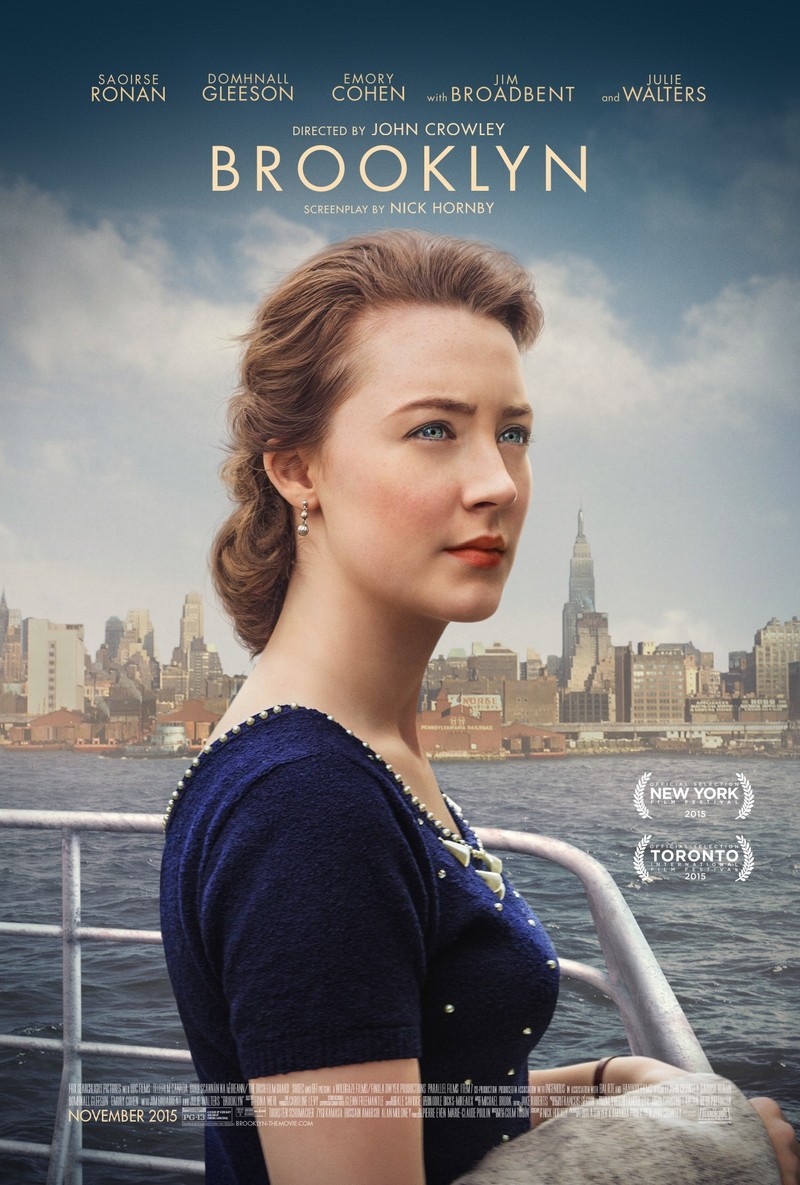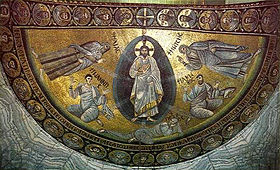This post is part of the series Virtue Ethics at the Movies. You can read the first series post here, the post on Mad Max: Fury Road here, and the post on The Martian here.
Contains Spoilers.

John Crowley’s Brooklyn has been nominated in the Best Picture category for an Academy Award. (Saoirse Ronan also received a nomination for Actress in a Leading Role). Based on the novel by Colm Toibin, the film could simplistically be described as a love triangle plot but it is actually more complex than that. It is a sweet love story, to be sure, but what gives it depth is that it portrays a process of discernment slowly, carefully, and beautifully. Since this series is about virtue ethics, I’m going to focus mostly on the story’s portrait of moral agency and decision-making, noting other pertinent moral questions as they arise.
Set in the 1950s, the story revolves around Eilis (Saoirse Ronan), a young woman from Enniscorthy, Ireland, who leaves home because she cannot find a good job in her hometown. Her sister helps her to secure the assistance of a Catholic priest, Fr. Flood (Jim Broadbent), who finds her lodging at a boarding house in Brooklyn, and sets her up with a job in a department store and a bookkeeping course at night. Eilis is terribly homesick at first, but gradually begins to adjust to life in Brooklyn. She meets Tony Fiorello (Emory Cohen) at a church hall dance, and their courtship begins. When Eilis has to go home to Ireland for a family emergency, she faces a decision: Tony or Jim? Jim Farrell, the Irish love interest, could not be more kind, sincere, and dependable. He has hopes of traveling the world, and yet is firmly rooted in the Irish community Eilis used to call home. But is it home anymore? What is home, anyway? Where should she go? What should she do? Who is she?
Some critics loved this film. Some hated it. Richard Brody doesn’t mince words in his blog post, arguing that Brooklyn “greenwashes Ireland” and “sanitizes Brooklyn.” And he has a point. The film oozes nostalgia and probably gives us a view of the 1950s that never really existed. But this film is not trying to give a gritty portrait of every immigrant’s experience. A. O. Scott’s review is more complimentary, calling it a “lovely film,” explaining: “I can’t remember the last time I cared so much about the marital prospects of a fictional character.” My thoughts exactly.
What makes the storytelling compelling, in my view, is that the decision Eilis must make is not clear cut, which rings true for me. In the moral life, we rarely make decisions in which is it obvious that one path before us is purely good and the other path before us is purely evil. In such cases, there wouldn’t be much to discern anyway. But in most cases, we are pondering decisions in which both paths before us contain values and disvalues–seemingly jumbled together. No matter which choice Eilis makes, someone will be hurt, perhaps irreparably. And here is where other moral questions arise. What obligations does Eilis have by virtue of kinship, friendship, citizenship, courtship? To whom does she owe her service, attention, life? These are questions that each of us must answer for ourselves today as well. If Eilis returns to Tony in Brooklyn, who will care for her mother? But could Eilis live with herself if she breaks her promise to Tony?
In a year that Fifty Shades of Grey was released (thankfully not a Best Picture contender), the courtship of Eilis and Tony might seem old fashioned. Eilis is attracted to Tony because he is kind, he respects her, and she thinks they will be happy together. The 1950s era dating culture includes its fair share of awkwardness, but it enables Eilis and Tony to get to know each other. They go out for pizza and talk, he walks her home from her night classes, they dance in the church hall, and they swim at Coney Island. The audience laughs at the advice Eilis receives from her friends at the boarding house and at the department store, and we might notice the modesty of her swimsuit. But in a world before Facebook, Tinder, and Snapchat, Eilis and Tony (and then Eilis and Jim) have to actually hang out together to figure out if they love each other. There’s a bit of wisdom there.
When Eilis is confused about which path to take, we see her anguish. We see her confusion, tears, pain. And then, the grace of clarity. She knows. This doesn’t make it easy to say goodbye to her mother and to Jim, but in Ronan’s subtle performance we see Eilis find peace and freedom in her decision.
The film’s portrait of Eilis resists simple dichotomies. She left home in search of a better life, but she was never just a victim of economic forces. She risked much to migrate to America, but she didn’t do it all by herself (recall the assistance of her sister, and of Fr. Flood and Mrs. Kehoe). Eilis is constrained by forces beyond her control, as we all are, but she also asserts her agency by deliberating and making choices. Ambiguity remains, for in doing so she hurts people she loves, but no one ever said the moral life was neat and tidy.
Does this film make the viewer more virtuous? It depends. One could argue that Brooklyn could help the viewer feel empathy for the millions of migrants, refugees, and displaced persons today. After all, our church community could play a role in providing social services (shelter, employment assistance, etc) to immigrants today, as Fr. Flood does in this film. But the film also provides a window into the process of conscience formation and moral decision-making. As Kathryn Lilla Cox explains in her new book, Water Shaping Stone, we need to recognize the importance of both ambiguity and moral responsibility. Cox argues that conscience:
“pulls together our cognitive, affective, bodily, and spiritual dimensions… It is too facile and simplistic to presume that we can predict what conclusions our conscience will arrive at or truths it will illuminate. Instead, our encounters with the living God, with other human beings, with the created world, and with ourselves begin to elucidate the contours of understanding right, wrong, good, evil, discipleship, and holiness. While often difficult, following one’s conscience requires focus on what God is bringing forth, where new life is arising, what is being cleansed or washed away–in short, discerning and responding to where God is acting in our lives.” (x, see also 93-102).
And attention to the movement of the Spirit in our lives requires patience, introspection, and courage. In Brooklyn, Eilis demonstrates that this discernment is not easy, but that it can bring peace and a clearer sense of the good. I highly recommend this film.




